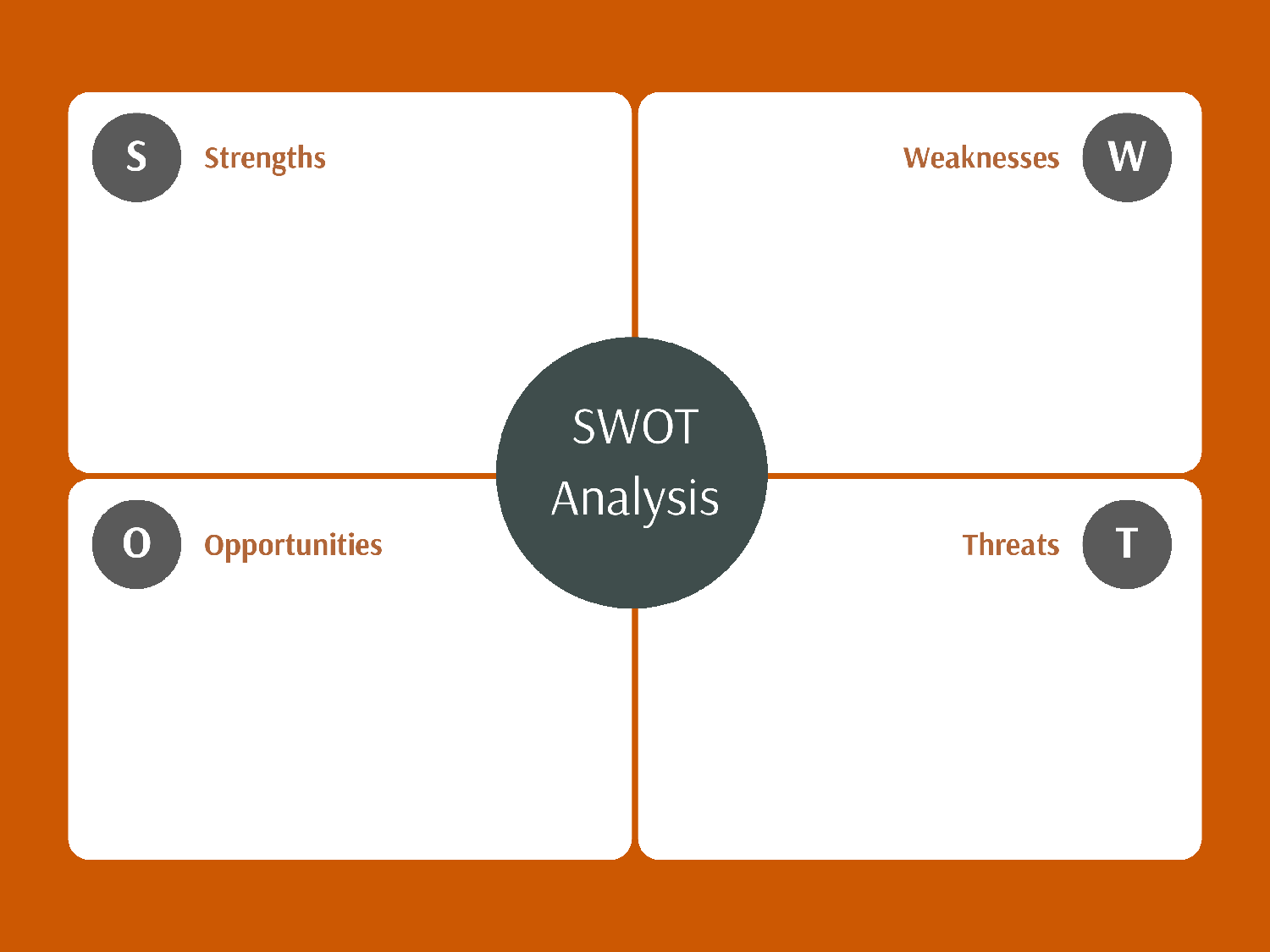You already know how fast the highly competitive food industry can change. But did you know that a restaurant SWOT analysis can improve the success and profitability of your business?
When you understand the strengths, weaknesses, opportunities, and threats (SWOT) facing your restaurant, you’ll gain insights into areas for improvement and growth—areas you might not have noticed otherwise.
Conducting a SWOT analysis isn’t just about identifying what’s working or not within your restaurant, though. It’s also about understanding larger market forces and competitor strategies, knowledge that will ultimately help you make more informed strategic decisions.
In this article, we’ll look at:
- What is a SWOT analysis and why your restaurant needs one
- Common elements of a SWOT analysis for restaurants
- How to conduct a SWOT analysis for your restaurant
Ready? Let’s dive in.
What is a SWOT analysis? Why does your restaurant need one?
Steering your restaurant to success is like navigating through a dense forest; you need a clear understanding of both the forest and the trees—your entire surroundings.
That’s where a SWOT analysis comes into play, acting as your compass and helping you identify where to point your strategy. By shining a light on areas for growth and improvement, a SWOT analysis can help you navigate with confidence.
A thoughtful SWOT analysis will allow you to identify your:
- Strengths—think of them as operational triumphs.
- Weaknesses—areas in need of improvement.
- Opportunities—avenues for potential growth.
- Threats—obstacles that could hold you back from success.
A prime example of a restaurant SWOT analysis is this one on Burger King by the Business Model Analyst from Burger King.
Despite its impressive reach with almost 20,000 restaurants across more than 100 countries, Burger King still grapples with significant weaknesses and threats in the SWOT framework.
And even though Burger King is a global fast-food chain, you may find that your restaurant also shares similar strengths, weaknesses, opportunities, and threats.
Elements of SWOT Analysis
Understanding the four pillars of SWOT—strengths, weaknesses, opportunities, and threats—is pivotal for creating a resilient, practical strategy for increased profitability. Let’s dive deeper into each of the framework’s elements, drawing from real-world examples to provide a comprehensive view.
Strengths
What makes people choose your restaurant above all others? Is it the ocean views, an award-winning pizza, or an experienced, enthusiastic management team? Those factors are your strengths.
Strengths can set your restaurant apart in a crowded market. They’re the elements you excel at, make your business unique, and give you a competitive edge.
Chipotle is an example of a restaurant that leans on its strong brand reputation and quality food for strong financial performance. In 2022, the chain’s revenue was $8.6 billion, an increase of 14.4% over 2021’s results.
Photo by Andrew Relf on Unsplash
Beyond a strong reputation, other strengths you can take advantage of for your restaurant include:
| Excellent service | Unique menu items | Positive online reviews |
| Great location | Large parking lot | Attractive marketing |
| Local ingredients | Signature dish | Themed atmosphere |
| Social mission | Proximity to attractions | Loyal customer base |
Weaknesses
If strengths are the areas where your restaurant excels, weaknesses are the areas where it needs to improve. No one likes focusing on what makes us weak; but recognizing the weaknesses in your business model is the first step towards improvement.
Examples of weaknesses include:
| No gluten-free options | Poor online presence | Limited menu options |
| Outdated decor | Need a new POS system | Lackluster experience |
| Limited access to funding | Confusing menu | Long wait times |
| Unequal price to value | Low visibility location | Unclear concept |
One way to uncover weaknesses is to analyze your social media accounts and customer feedback—as well as the social accounts of your key competitors. For instance, the fact that a competitor’s audience is complaining online about a lack of options for vegetarians can become both an opportunity and a strength for you.
Photo by Stanford Smith on Unsplash
Opportunities
Opportunies are external factors that can potentially increase your revenue—and your profit.
Consider Shake Shack. In 2017, the company took advantage of technology and launched its mobile app to allow customers to order and pay ahead, skip the line, and earn rewards. This app also provides personalized recommendations, nutritional information, and location-based services. In July 2022, the company’s chief financial officer, Katie Fogertey, told Restaurant News that in the space of about two years, Shake Shack had taken nearly four million orders on the company-owned app and web channels.
Examples of other opportunities that may be available to your restaurant include:
| Tech-driven pricing solutions | Trend toward sustainability | Food delivery platforms |
| Geographic expansion | New locations | New services, like catering |
| Local collaborations | Quality ingredient sourcing | Trend of social responsibility |
| City revitalization efforts | Trend toward healthy eating |
Technology is an indispensable tool in boosting profitability—which is exactly what Stellar Menus offers. Our Intelligent Menu Platform monitors the market to watch for changes in the cost-driving ingredients in each of your dishes, and then alerts you when it’s time to consider changing your prices. When you’re ready to change prices, you can do it quickly and easily through the platform with just one click, and all changes instantly roll out to your mobile, website, and print menus.
Proactive price monitoring with the Stellar Menus Intelligent Menu Platform
Threats
Threats are external factors beyond your control. Being aware of threats will help you devise strategies to overcome them.
Starbucks is a good example of a company that successfully responded to threats over the last few years. When the pandemic struck, Starbucks implemented safety measures and expanded its delivery and mobile ordering services. When two Black men were arrested at a Starbucks in Philadelphia for allegedly trespassing, the company closed thousands of its stores in the U.S for a few hours to conduct racial bias training. Starbucks also pledged $100 million to support BIPOC businesses, with BIPOC standing for Black, Indigenous, and People of Color.
Other examples of threats your restaurant may face include:
| Economic downturn | Increased food prices | Changing diner preferences |
| Intense competition | Food safety issues | Social unrest |
| Global pandemics | Regulatory changes | Environmental issues |
| Rising labor costs | Supply chain disruptions | Hackers |
Now that you understand the components of a SWOT analysis, let’s dive in and look at how to conduct one for your restaurant.
How to Conduct a SWOT Analysis
Conducting a SWOT analysis is a bit like peeling back the layers of an onion; it involves a deep dive into your restaurant’s strengths, weakness, and environment In this section, we’ll walk you through the practical steps involved in conducting a SWOT analysis.
Creating a SWOT Grid
The first thing to talk about is the tool that will help with the process—the SWOT grid. The grid will act as your roadmap, helping you to visually organize and analyze your findings.
Although the typical grid is simply an x-y axis, your grid can be whatever you want—a table, a mindmap, even PowerPoint slides. Moving forward though, we’ll just use the word grid for simplicity.
Populating the SWOT Grid
The grid is where you list your strengths and weaknesses.
- Strengths—List your strengths in the upper left quadrant. To indicate the importance of the strength, write it in larger letters or place the words closer to the center of the grid. Place minor strengths toward the edges to show their lesser affect.
- Weaknesses—Note weaknesses in the upper right quadrant. As with strengths, make more significant weaknesses central and minor ones peripheral.
- Opportunities—The lower left quadrant is for opportunities. Place avenues of tremendous growth closer to the center to indicate their potential to positively influence your restaurant.
- Threats—The lower right quadrant is reserved for threats. Place more imminent threats centrally to highlight the need to address them urgently.
Don’t forget the data
The grid, while a good tool for collecting information, is less important than the information itself. To set yourself up from success, we recommend gathering customer feedback through online or in-person surveys along with a brainstorming session with your staff and management team. This way, you’ll be able to look beyond your own perspective and see what others have to say about the strengths, weaknesses, opportunities, and threats that will guide the strategy for your restaurant.
Bottom line?
In the fast-paced restaurant business, a SWOT analysis can be a pillar of success, helping you unearth opportunities and navigate challenges with foresight and agility. The tool not only highlights the strengths of restaurant and areas where it needs improvement; it also prepares you to take advantage of opportunities and fend off threats.
Consider strategic planning with a SWOT analysis as a continual journal. It’s a reminder to continually scan your internal and external environments for ways to increase profitability.
Might Stellar Menus be an opportunity you can turn into a strength for your restaurant? Our Intelligent Menu Platform is purposely designed to increase profitability for independent restaurateurs and the owners and managers of independent restaurant groups.
We’d love to show you how it works. Schedule a demo today.












